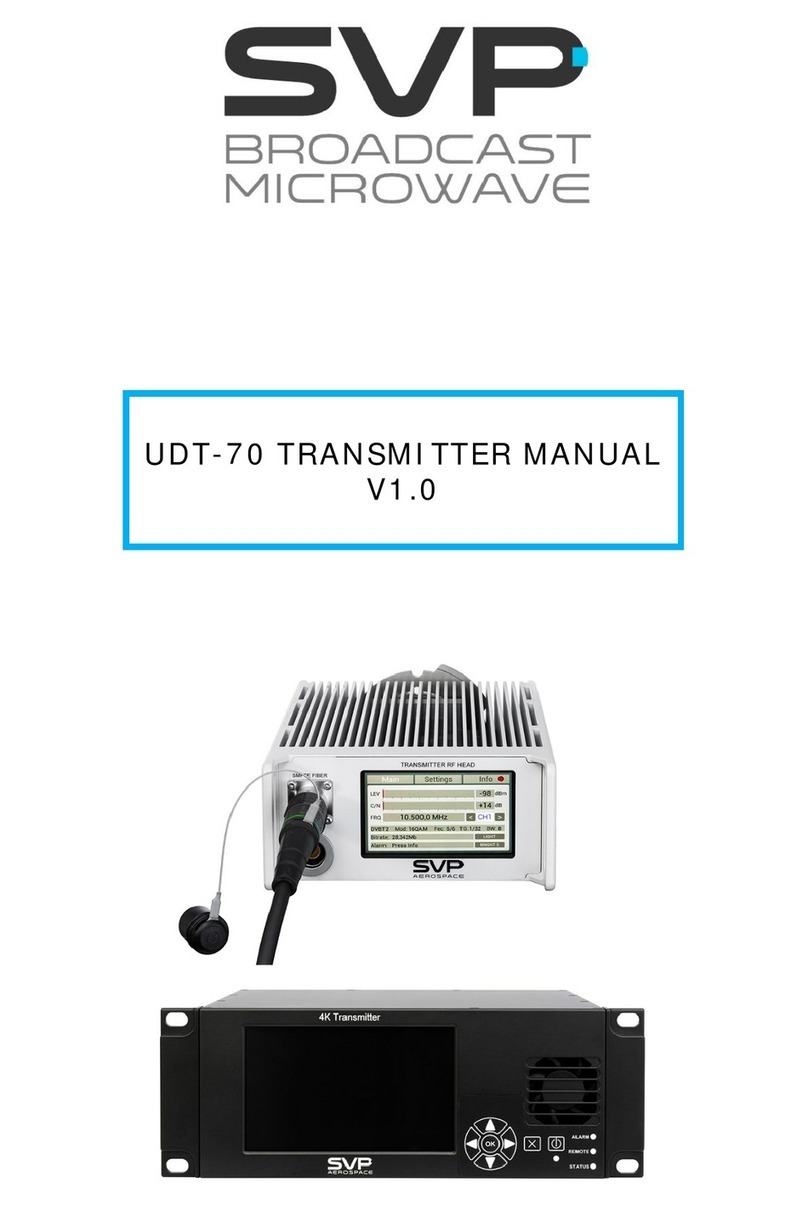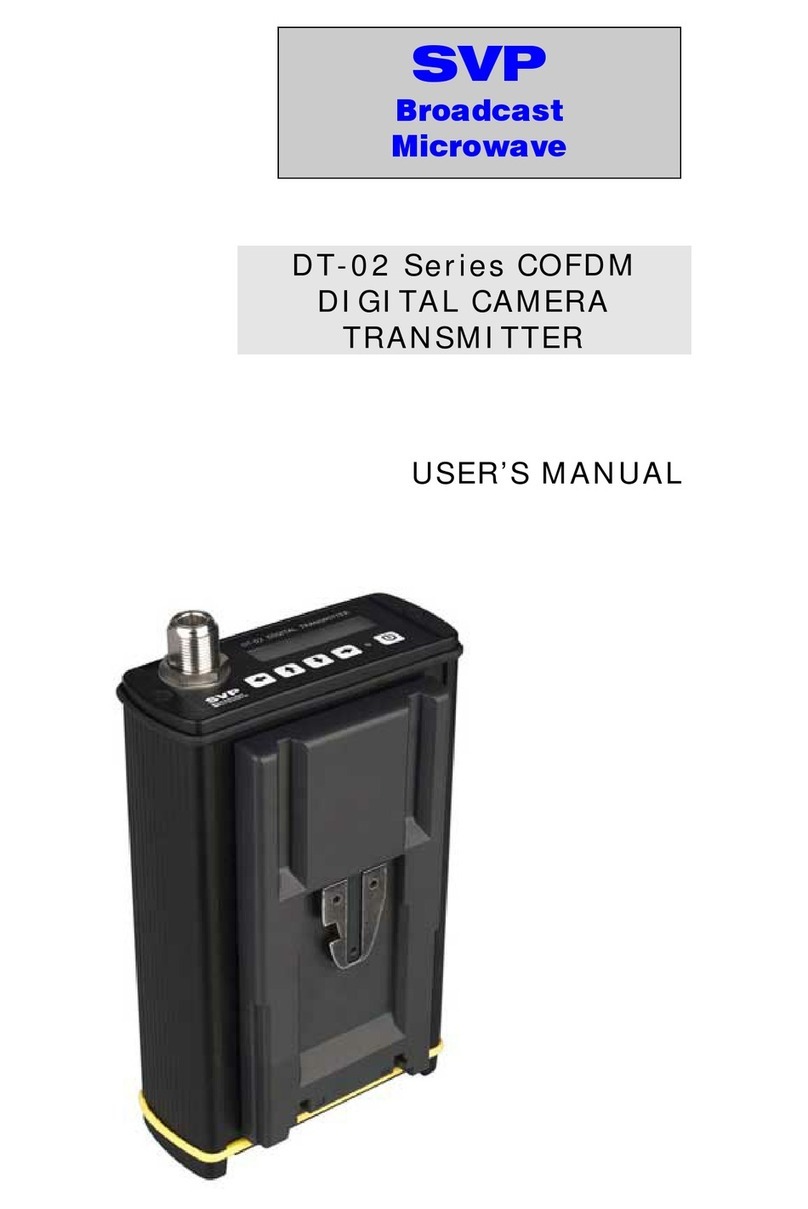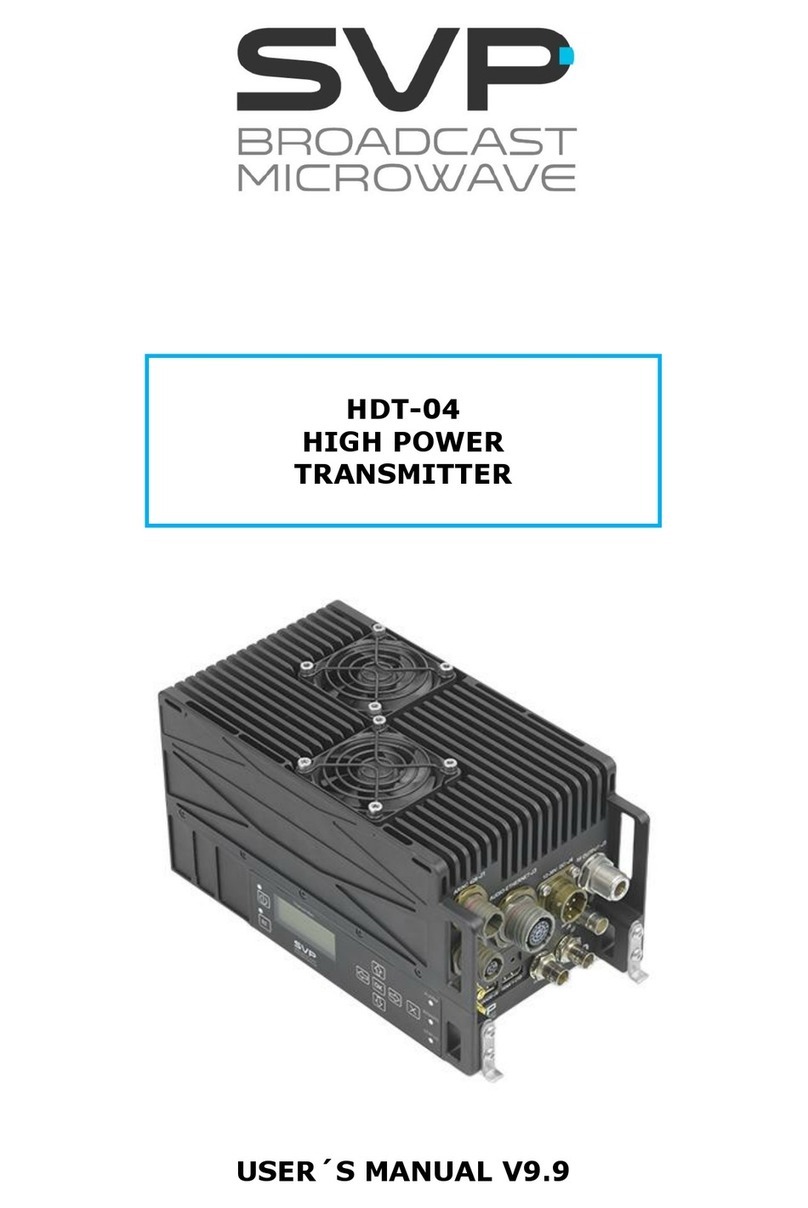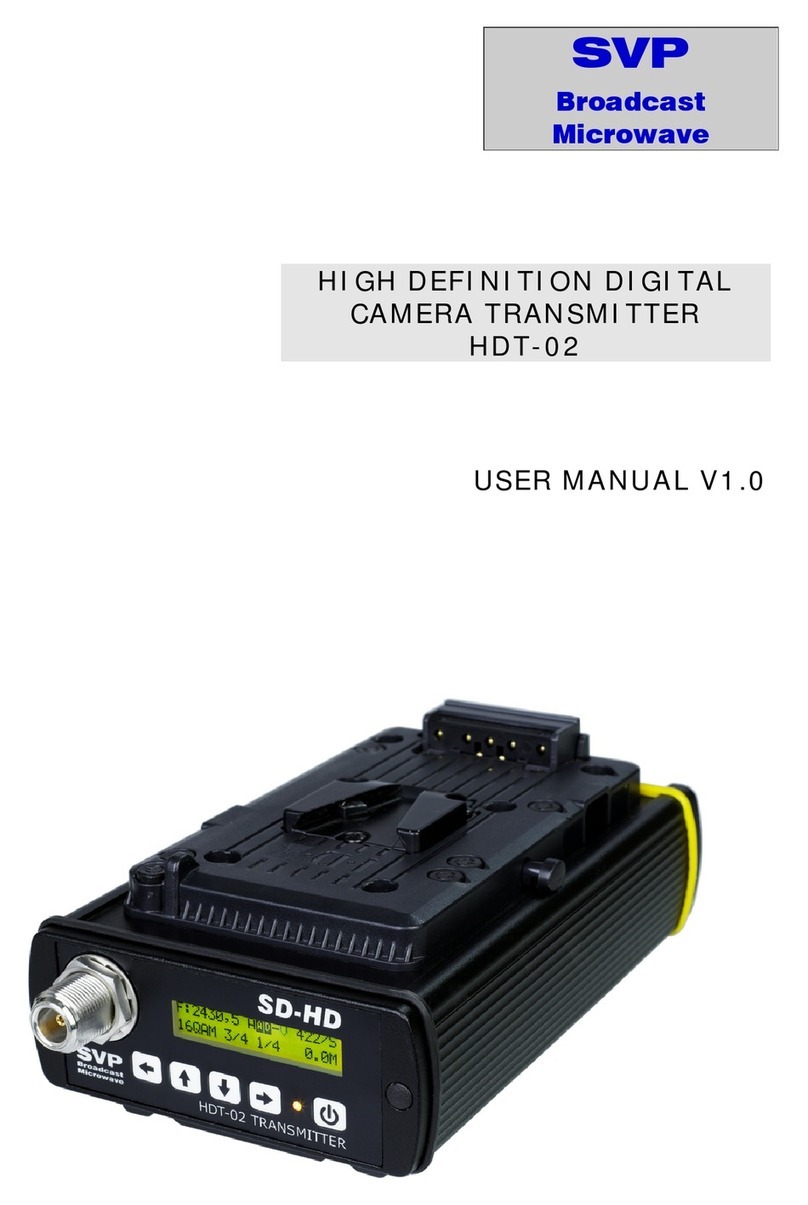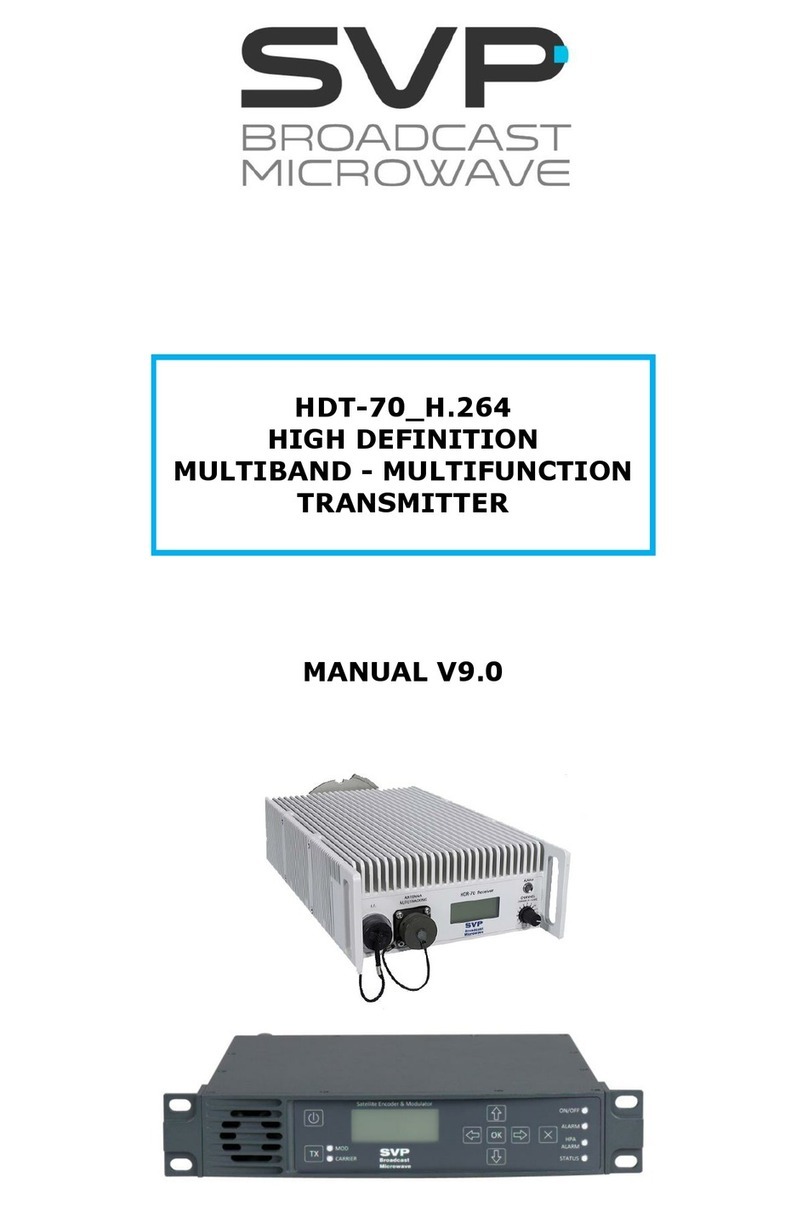IV
HDT-02_H.264 High Definition Digital Camera Transmitter
USER’S MANUAL V4.11
Important Notes
1. The HDT-02_H.264 High Definition camera transmitter is completely
compatible with the DVB-T/T2/S2 Standards, included in the European
Standard ETSI EN300744 (DVB-T), ETSI EN300755 (DVB-T2), ETSI
EN302307 (DVB-S2) and ETSI EN300421 (DVB-S).
2. It is important that when the transmitter is switched on, the selected RF
output connection must have the suitable antenna or must be loaded.
3. The HDT-02 digital camera transmitter applies a MPEG-4 compression to
either HDMI, composite video or SDI input signals. An MPEG-1 layer 2
compression is applied to the corresponding 4 analogue audio channels,
the 2 stereo SDI embedded, the HDMI embedded and the AES digital
audio signals. The resulting multiplexed signal is transmitted using
COFDM modulation system.
4. The HDT-02_H.264 transmitter is available from 1 GHz to 6.4 GHz in
three ranges (1-2.8 GHz, 2.8-4 GHz and 4-6.4 GHz) for the DVB-T2 and
DVB-T RF stage and the L band for the DVB-S2 and DVB-S IF stage.
5. In 1080p Video Format, it can only be performed the Standard Delay,
not the Low Delay, Super Low Delay or Ultra Low Delay.
6. If the RF output is set to DVB-T2 and the bandwidth selected is 1.7 MHz
then, the device automatically disables the Audio2 and it sets the bitrate
of the Audio1 to 128 Kbps.
7. In case it is selected SDI input with 1080p format, the delay will be
automatically Standard.
8. Equipment’s maximum output power for the DVB-T2/T is 100mWatt
(selectable from -5 to +20 dBm) and for the DVB-S2 and DVB-S is from
-20 to + 5 dBm.
9. Special care should be taken with SDI cables, quality and length, these
are very important, especially when HD-SDI or 3G SDI signals are
transmitted.
10.If any audio or data channel are not used in a transmission, they should
be disabled, in order to assign that bitrate to the video and achieve a
higher quality transmitted video signal.
11.Only authorized personnel should open the product and any repair or
warranty will be invalidated if the seals are broken.






